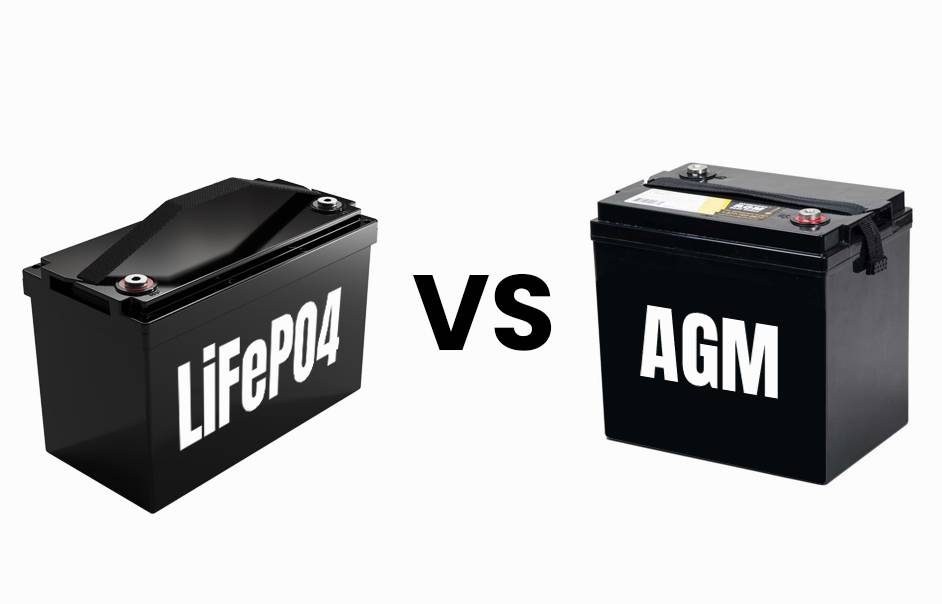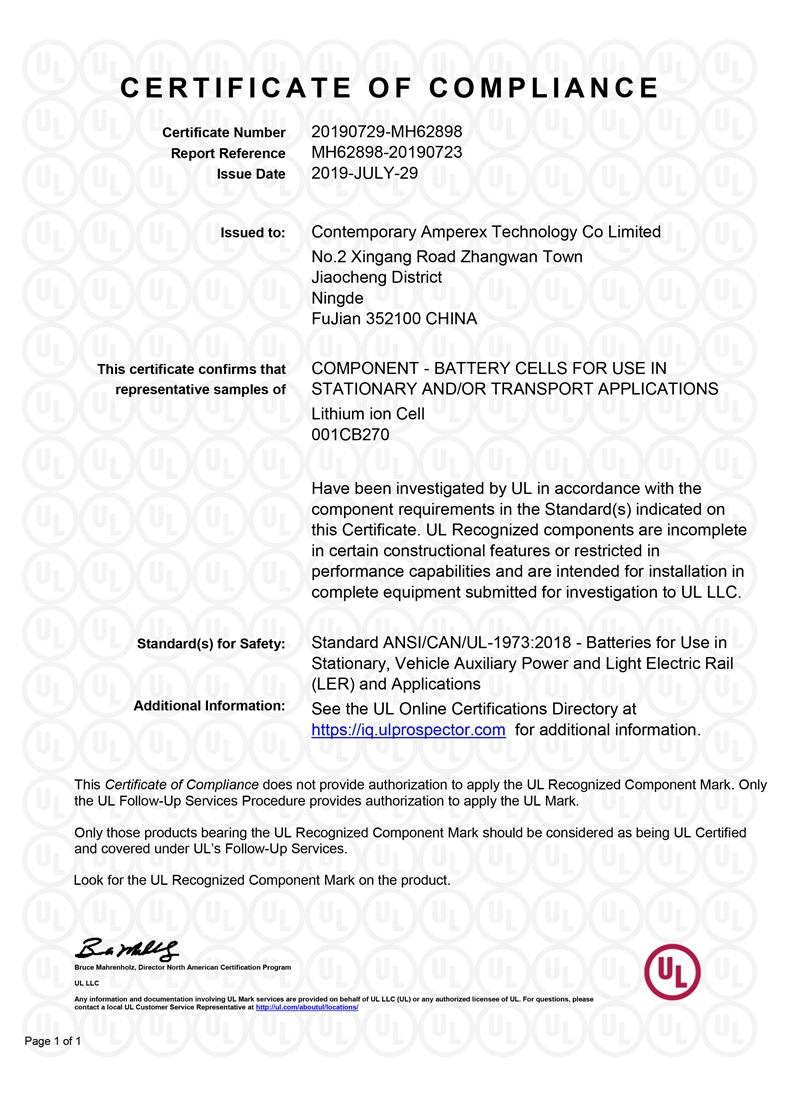Blog
LFP vs AGM Battery: 10 Key Differences You Should Know in 2025
2025-07-23 | Calvin

When it comes to choosing the right battery for energy storage—whether for solar systems, RVs, boats, or backup power—LFP (Lithium Iron Phosphate) and AGM (Absorbent Glass Mat) batteries are two of the most widely used options on the market today. Both offer unique advantages, but they differ significantly in chemistry, performance, cost, and lifespan.
In this guide, we’ll break down the 10 key differences between LFP and AGM batteries to help you make an informed decision.
What Are LFP and AGM Batteries?
LFP (LiFePO4) Battery
LFP stands for Lithium Iron Phosphate, a type of lithium-ion battery that uses lithium iron phosphate as the cathode material and carbon as the anode. These batteries are known for their high safety, long cycle life, and stability. The nominal voltage of an LFP cell is typically 3.2V, and they’re often chosen for renewable energy applications due to their thermal and chemical stability.
AGM (Absorbent Glass Mat) Battery
AGM batteries are a type of valve-regulated lead-acid (VRLA) battery that uses a glass fiber separator soaked in sulfuric acid. Their nominal voltage per cell is 2.0V. AGM batteries have been widely used for decades in automotive, UPS systems, and off-grid setups due to their affordability and maintenance-free design.
10 Key Differences Between LFP and AGM Batteries
1. Weight and Size
- LFP batteries are significantly lighter—often 50% lighter than AGM batteries of the same capacity.
- They are also more compact, making them ideal for space-constrained installations like RVs or marine use.
2. Energy Density
- LFP: 90–160 Wh/kg (high-end models can reach 210 Wh/kg)
- AGM: 50–70 Wh/kg
- LFP batteries provide more energy per kilogram, allowing you to store more power in less space.
3. Usable Capacity (Depth of Discharge, DoD)
- LFP batteries can safely discharge up to 80–90% of their capacity.
- AGM batteries are typically recommended to be discharged only up to 50% to extend their lifespan.
- This means you’ll need more AGM batteries to get the same usable energy.
4. Cycle Life and Longevity
- LFP: Up to 3000–7000 cycles, lasting 10+ years
- AGM: Around 500–1200 cycles, lasting 3–5 years
- Over time, LFP batteries deliver significantly more value due to their longer lifespan.
5. Charging and Discharging Efficiency
- LFP batteries charge faster and more efficiently. A full charge may take 4–5 hours, while AGM may require 10+ hours.
- LFP batteries support higher charge/discharge rates, ideal for demanding applications.
6. Temperature Performance
- AGM batteries perform better in cold environments, and can be charged below 0°C.
- LFP batteries have poor low-temperature performance and generally should not be charged below 0°C without special systems.
- However, LFP batteries have superior heat tolerance in high-temperature environments.
7. Safety
- LFP batteries are among the safest lithium batteries available. They are stable even under physical stress, overcharging, or short-circuit conditions.
- AGM batteries, though generally safe, contain sulfuric acid, which can be hazardous if leaked or damaged.
8. Environmental Impact
- LFP uses non-toxic materials and is more environmentally friendly.
- AGM batteries contain lead, a hazardous heavy metal requiring proper recycling.
9. Self-Discharge Rate
- LFP: ~2–3% per month
- AGM: ~4–6% per month (and higher in other lead-acid types)
- LFP batteries maintain charge longer when stored and do not require frequent top-up charging.
10. Price and Total Cost of Ownership
- Upfront Cost: LFP batteries can cost 2–3 times more than AGM batteries.
- Long-Term Value: LFP batteries outlast AGM batteries by several years, reducing total cost over their lifespan.
- In the long run, LFP batteries are often more cost-effective despite a higher initial investment.
So, Which Battery Is Better?
| Criteria | LFP Battery | AGM Battery |
|---|---|---|
| Weight & Size | ✅ Compact & lightweight | ❌ Heavy & bulky |
| Energy Density | ✅ High | ❌ Moderate |
| Lifespan | ✅ 10+ years | ❌ 3–5 years |
| Safety | ✅ Excellent | ⚠️ Moderate |
| Environmental Impact | ✅ Low | ❌ Contains lead |
| Cost | ❌ High upfront | ✅ Budget-friendly |
✅ Choose LFP if you want:
- Long-term reliability
- High energy efficiency
- Better safety and eco-friendliness
Choose AGM if you need:
- A lower-cost, short-term solution
- Good cold-weather performance
- Familiar, widely available battery type
Final Thoughts
If your budget allows, LFP batteries are the clear upgrade path—offering superior performance, safety, and long-term value. They’re especially ideal for solar systems, electric vehicles, off-grid cabins, and marine applications.
However, AGM batteries still have their place, particularly where affordability and cold-weather performance are top priorities.
- Next:How Many Cold Cranking Amps (CCA) Do You Need in Cold Weather?
- Previous:Tesla Battery Types: A Simple Guide for Model S, 3, X, and Y
Contact Details
Lithium LiFePO4 Batteries and Lithium LiFePO4 Cells Supplier - LiFePO4 Battery Shop
Contact Person: Miss. Elena Wang
WhatsApp : +8615263269227
Skype : +8615263269227
WeChat :15263269227
Email : info@lifepo4batteryshop.com
All Products
- A123 Battery (5)
- Sinopoly Battery (7)
- GBS Battery (16)
- CALB Battery (22)
- Cylindrical Cell (3)
- Energy Storage System (0)
- Battery Management System (2)
- Sodium ion Battery Cell (3)
- Lithium Titanate Battery (16)
- Ternary Lithium Battery Cell (11)
- REPT Battery (8)
- BYD Battery (2)
- CATL Battery (14)
- Thunder Sky Winston Battery (21)
- EVE Battery (29)
- LiFePO4 Battery Cell (4)
Certification
Customer Reviews
- I have fond memories of our meeting in Shanghai with LiFePO4 Battery Shop Elena. Your company left a strong impression on me with its impressive growth and professionalism. We both value straightforwardness and honesty, which I believe are the most important qualities in any partnership. I am confident that we can build a successful collaboration based on these shared values. —— Robert from USA
- I've been working with LiFePO4 Battery Shop for years, and their reliability is unmatched. While other suppliers frequently change sales teams, LiFePO4 Battery Shop has consistently provided exceptional service with a stable team. Their commitment to quality and customer support truly sets them apart. —— Henry from Australia



